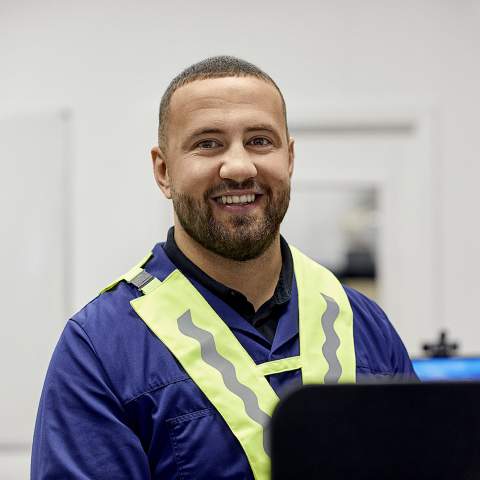Reducing plastic waste
Jerry is making it real
Meet Jerry, a seasoned service coordinator from the Netherlands that has been part of the Elopak family for nearly two decades. His current mission revolves around reducing plastic waste by helping our customers in Europe meet the requirements for attached caps on beverage cartons by July 2024.
The concept of attached caps – known as tethered caps – stems from the Single-Use Plastic Directive issued by the EU in 2019. It is designed to combat plastic waste and reduce the impact of certain plastic products on the environment.
As a service coordinator, Jerry’s work takes him on frequent travels and customer visits. His role involves liaising with customers on technical matters and optimizing preventive maintenance programs for filling machines.
Towards July 2024 Jerry is coordinating a team of service engineers to rebuild our customers’ filling machines and help them succeed in the transition to tethered caps. We talked to Jerry about the tethered caps transition, engineering challenges and what he thinks the change means for our industry.
How does a filling machine work?
The machines are designed to fill the cartons produced by Elopak with products like milk, yoghurt, juice or even non-food products for home and personal care. Inside the filling machine a flat carton is folded into a square or rectangular shape after which the bottom is sealed, a cap is sealed into the carton and the carton is filled with the product. In the last step the top of the carton is sealed.
Could you explain the specific changes you’re making to the filling machines to accommodate tethered caps?
Almost every rebuild involves the replacement of something we call spigots. These are the parts onto which the cap is pushed before it’s sealed to the carton. For some rebuilds we must replace a part or sometimes even the complete cap-track system. Caps are transported from a cap feeder to the filling machine via a cap-track system. In some cases, the new tethered caps have a different dimension than the former types used, leading to a need to also modify the cap-track system.
What are some key challenges during the rebuild?
Some of the rebuilds are relatively straightforward and can be finished in one day, other rebuilds will require more parts to be replaced and can take several days to complete. A key challenge is the fact that our customers cannot go back to the original cap once the machine is rebuilt. The expectation to deliver a flawless tethered cap rebuild is very high for everyone involved, especially for the engineers who are rebuilding the filling machines.
What technical considerations were crucial when adapting the filling machines for tethered caps?
The filling machines at our customer sites are set up in different ways. We have developed rebuild kits for each machine to ensure that we can provide a good solution for all types of rebuilds needed. The size of the tethered cap is often different from the type of cap the customer currently uses, even a 0,5mm change in cap height can make a big difference when it comes to the technical efficiency of the machine.
How do you envision the beverage packaging landscape evolving in the next few years, considering these changes?
I believe that the introduction of tethered caps will contribute to Elopak’s commitment to a more sustainable future by reducing the amount of plastic waste. Because of the focus on sustainability, I expect a shift in the use of plastic packages to carton, not only when it comes to the food sector but also in the non-food sector.
